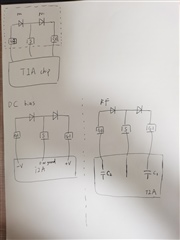Hi Team,
Do we have device that meets the customer's specifications below?
I want a TIA that can perform single-ended amplification of the differential mode signal of a BPD, i.e. two identical PDs connected in series. The TIA can have more than one channel and support multiple BPD amplification. I would like the TIA to be a module with an RF interface (e.g. SMA, or BNC). Bandwidth does not need to be high, greater than 1GHz is sufficient. Also meet AC coupling.
Regards,
Danilo


